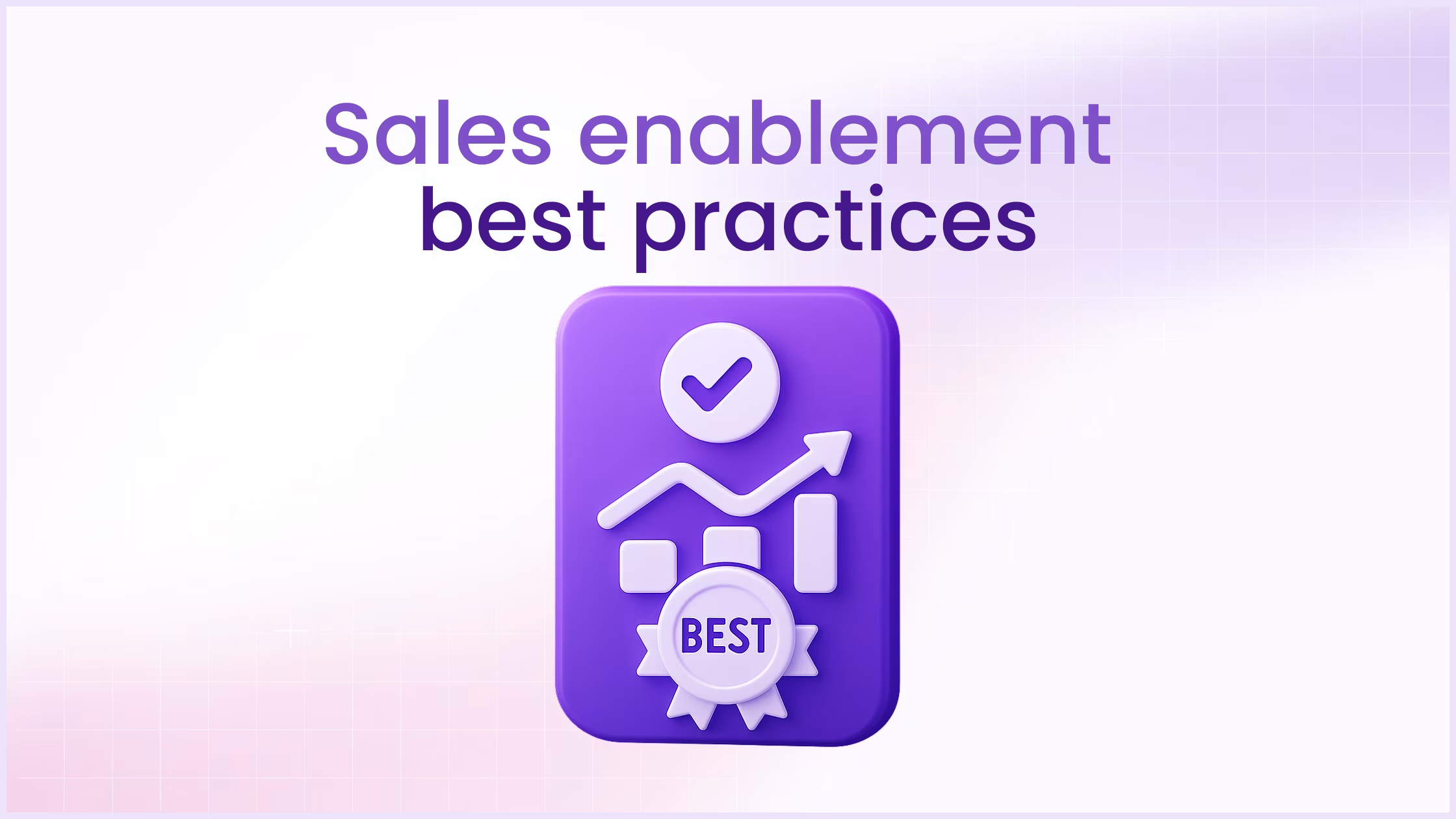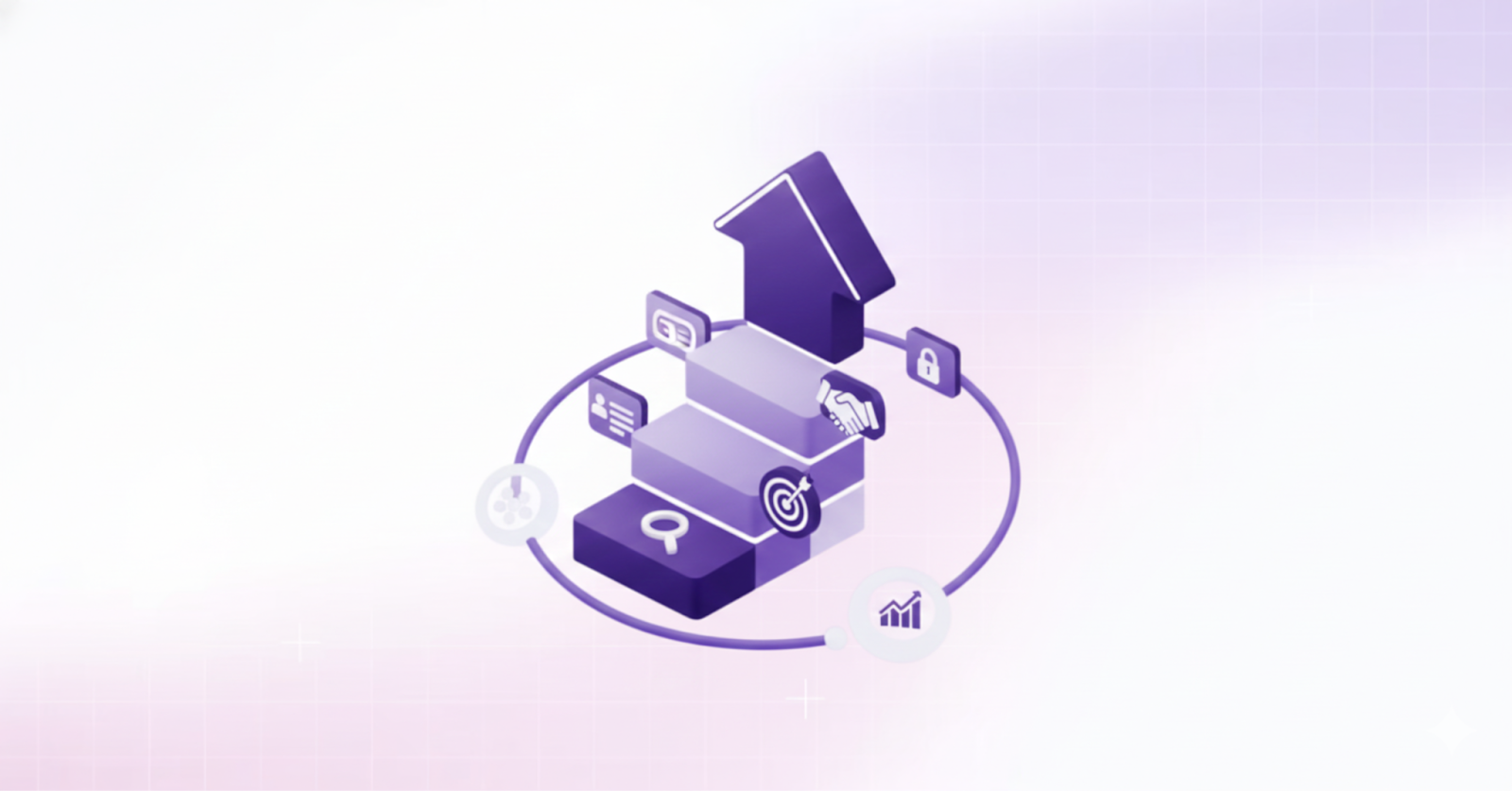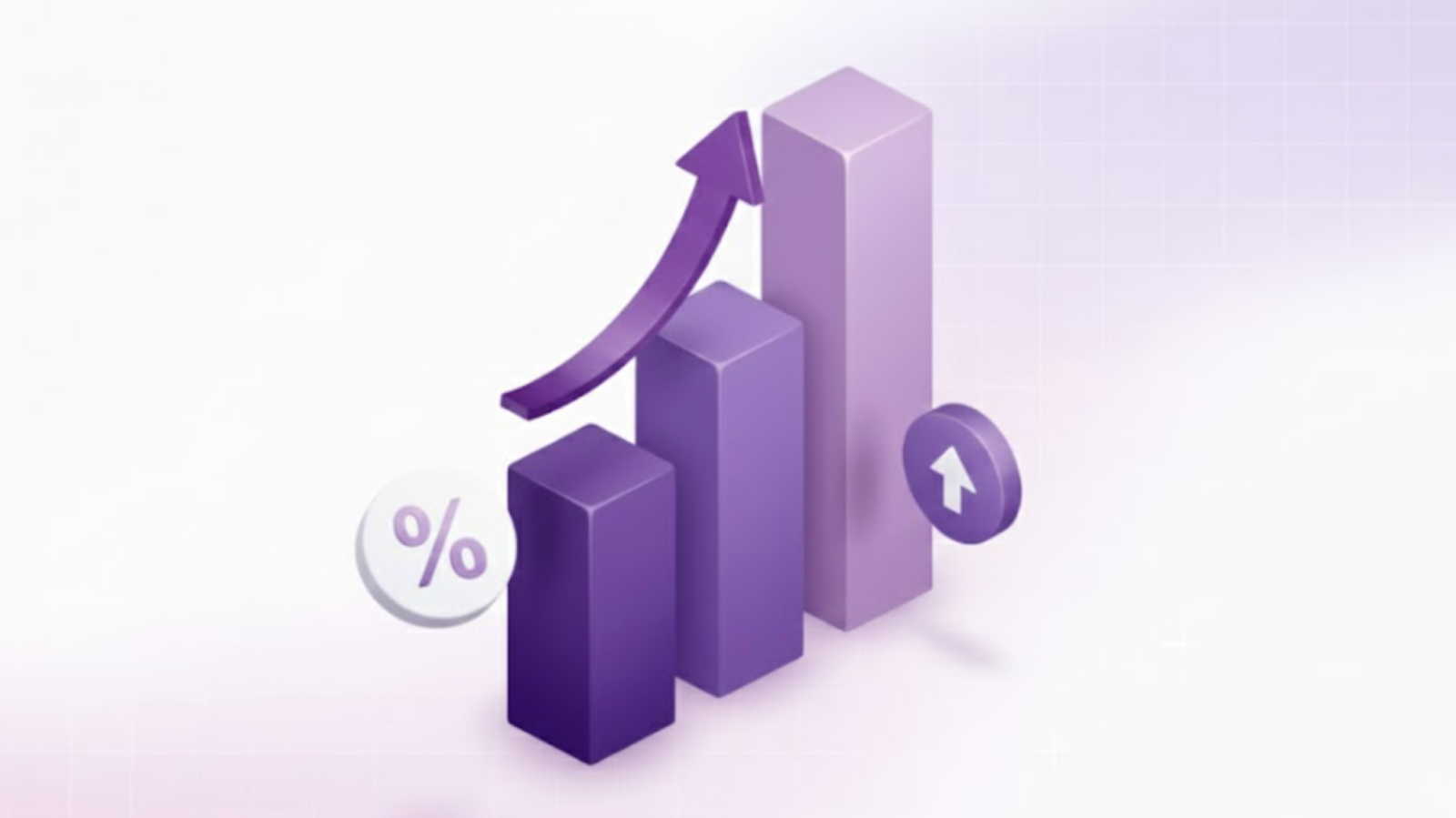If you've been in sales even for a little while, you'd know this: deals don't just close because of charm or luck. They close because the right digital sales enablement tools, content, and processes are in place to support sales reps from prospecting to post-sale. That's where digital sales enablement best practices come in.
Whether you're just getting started or looking to optimize an existing sales enablement program, this sales enablement guide walks through eight must-follow enablement strategies that drive alignment, productivity, and revenue growth. These strategies are designed to help you achieve your sales enablement goals and boost your overall growth strategy.
Why do sales teams need to get sales enablement right?
Before diving into best practices, it's essential to understand what sales enablement is. At its core, sales enablement is the process of providing sales teams with the resources, tools, and training they need to sell more effectively. The benefits of sales enablement include improved conversion rates, faster sales cycles, and enhanced customer satisfaction. It's a crucial tool for sales that supports lead generation and optimizes the entire sales funnel.
1. Know your buyer's journey inside out
Nearly 65% of sellers say customer journeys are more complex than ever before. And yet, many sales teams are still relying on one-size-fits-all messaging and content.
The truth is that if you don't understand your buyer's path, you're flying blind. Understanding why sales enablement matters starts with recognizing that modern buyers need different approaches at each stage of their journey.
Great sales enablement starts by asking: What are buyers thinking, feeling, and needing at each stage? Map it. Then align your training programs, content creation strategy, and enablement tools to those stages of the buyer journey. This approach to sales enablement strategy improves lead conversion and shortens the sales cycle.
2. Build a centralized content library
It shouldn't come as a surprise that sales reps waste valuable time looking for the right presentations to share when they should ideally be focusing on relationship building with the clients and closing deals.
42% of salespeople say they don't have enough information before a sales call. That's a huge productivity drain and one that's avoidable with proper digital asset management.
Use a sales enablement platform as a tool for sales to bring everything into one place: pitch decks, battlecards, case studies, even snippets from past winning calls. Organize it by use case and deal stage, so reps get what they need when they need it. This approach to content management systems can significantly boost sales productivity and includes essential sales collateral for every situation.
Top sales enablement tools offer advanced search capabilities and automated content recommendations, making it easier for your sales team to find relevant materials quickly. Consider implementing digital sales rooms where prospects can access personalized content throughout their buying journey.
3. Align sales enablement with real sales activities
Sales enablement isn't about cramming more training into people's calendars. It's about giving sales reps what they need in the moment and in the tools they already use.
Companies that achieve sales and marketing alignment and embed sales enablement into day-to-day workflows see a 67% improvement in deal close rates. This alignment is crucial for what is a sales enablement strategy that works.
Instead of weekly "lunch and learns," try delivering personalized content directly in Slack, Teams, or your customer relationship management systems, where it's easy to access and act on. This sales enablement strategy enhances the overall sales process optimization and supports better team collaboration.
Effective enablement strategies integrate seamlessly with existing workflows, ensuring that sales coaching and performance tracking happen in real-time. This approach to the sales enablement process creates continuous feedback loops that drive improvement and support product demos and other crucial sales activities.
4. Make onboarding shorter, smarter, and digital-first
Let's be real: the onboarding process shouldn't feel like drinking from a firehose.
The best sales enablement leaders now treat onboarding like product launches, using short video modules, real call libraries, and milestone tracking through digital sales enablement platforms. This approach improves knowledge retention and accelerates performance.
Organizations with mature sales enablement processes see a 33% reduction in ramp time for new sales reps. That means faster productivity and fewer reps burning out before they get up to speed.
Effective sales enablement is key to successful digital transformation in sales operations. Consider implementing pilot programs to test new onboarding approaches and gather feedback from your sales team. Modern sales enablement software can track progress and identify areas where additional sales training and coaching might be needed, supporting continuous learning throughout a rep's career.
5. Turn your top performers into sales playbooks
Your best sales reps already have the playbook. They just don't know it yet.
Record their calls using conversation intelligence tools. Study their objection handling. Break down their most effective email sequences. Then turn those into bite-sized templates others can use.
This is one of the most overlooked sales enablement strategies, and one of the most impactful, especially when built into your sales enablement software for easy access. It's a crucial part of implementing sales enablement effectively and supports solution-selling approaches.
Create success stories from these top performers and use them in coaching programs. This approach to sales methodology development ensures that your entire sales team can benefit from proven techniques. Consider implementing pitch practice sessions where reps can learn from these documented approaches and improve their product knowledge.
6. Don't forget post-sale enablement
Sales doesn't end when the contract is signed. That's just halftime.
Customer success, onboarding, and support teams need sales enablement love too, especially if they're responsible for renewals or expansions. It is only natural that companies that extend enablement into post-sale teams see significantly higher customer retention rates and customer lifetime value.
This approach to revenue enablement creates better customer engagement throughout the entire relationship. Think of sales enablement as a full-funnel effort, not just top-of-funnel. This strategy enhances overall customer experience and satisfaction while improving pipeline coverage.
Post-sale enablement activities should include continuous training for customer-facing teams and tools that support value-based selling during renewal conversations. Proper performance metrics should track both acquisition and retention success, contributing to stronger customer relationships.
7. Use data to fine-tune everything
If you're not learning from what's working (and what's not), you're standing still.
Track what content is used. See which training programs improve win rates. Identify patterns from your top reps. Then use those sales insights to refine your sales enablement initiatives on the fly.
Data isn't just for dashboards. It's your feedback loop for continuous improvement. Leveraging real-time data for data-driven decisions is crucial for measuring sales enablement effectiveness and optimizing your sales enablement strategy.
To properly measure sales enablement success, track key sales metrics including conversion rates, sales cycle length, and customer satisfaction scores. These performance metrics help identify which enablement strategies are working and which need adjustment.
Sales enablement vendors often provide analytics platforms that help sales teams understand content usage patterns and training effectiveness. Regular needs assessment based on this data ensures your enablement program stays relevant and impactful, providing actionable insights for improvement.
8. Let AI do the heavy lifting
Artificial intelligence has quietly become the MVP of modern sales enablement and for good reason.
AI platforms like SiftHub can surface content based on deal stage or buyer personas, summarize long white papers into digestible points, and even answer reps' questions using internal knowledge bases instantly. This level of sales enablement automation can significantly boost sales performance and sales effectiveness.
Sales reps who use AI effectively are 3.7x more likely to hit their quotas. The best part is that reps don't have to leave their workflow as AI meets them right where they're already working, acting as an AI sales assistant.
These automation tools can help with competitive positioning by instantly surfacing relevant battlecards and competitive intelligence. They can also support mutual action plans by automatically generating next steps based on conversation context, enhancing marketing automation efforts.
Defining sales enablement responsibilities
Understanding sales enablement responsibilities is crucial for success. The sales enablement team should focus on creating and maintaining enablement tools, developing training programs, and measuring program effectiveness. Clear sales enablement objectives help ensure everyone understands their role in the process.
Modern digital tools require dedicated management and optimization. Sales enablement programs should include regular evaluation of tools and processes to ensure they're meeting the sales team's evolving needs.
Remember that great sales enablement is more than just flooding reps with tools or content. It's about creating seamless systems that reduce friction and boost confidence.
By following these eight digital sales enablement best practices and layering in smart automation and machine learning, you're building something that scales with your sales team, not just for them.
Buyers are evolving. B2B sales is getting noisier. Sales enablement done right might just be your sharpest competitive edge in your go-to-market strategy. The key is developing a comprehensive enablement strategy that addresses the full sales cycle and supports your value proposition at every touchpoint.
Want to explore the enablement tools that can bring your sales enablement strategy to life? Check out this detailed blog on sales enablement tools to find out what fits your team best and enhances your overall sales enablement function.










